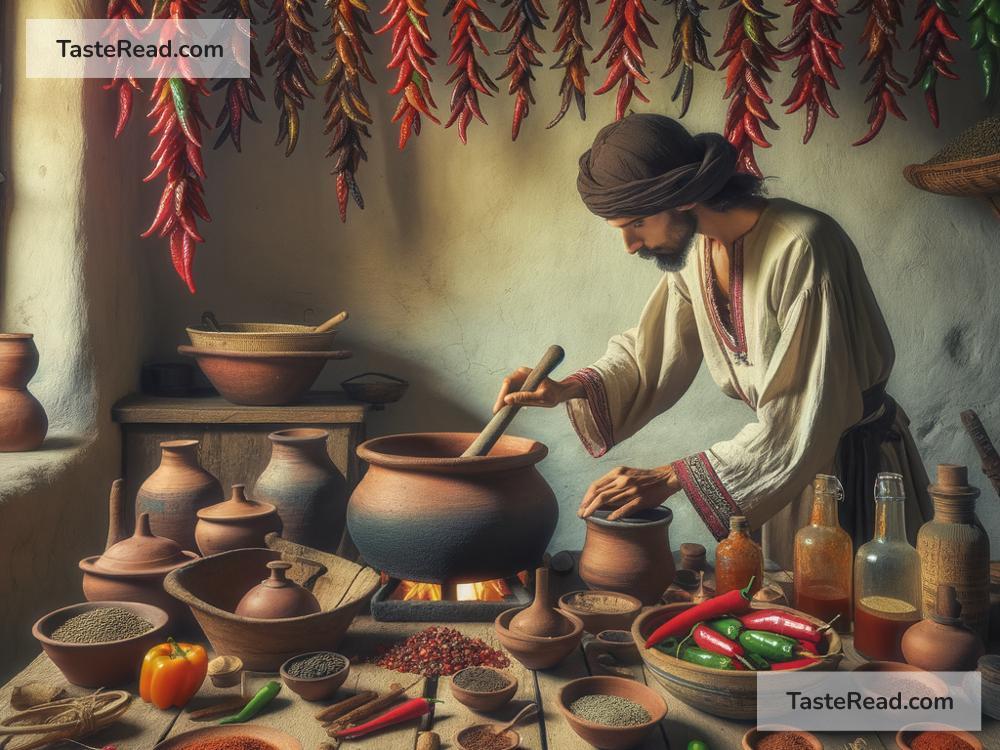Origins of the First Hot Sauce: A Spicy Tale from Folklore
Hot sauce has become a beloved addition to meals all over the world. It adds heat, flavor, and excitement to dishes, and food lovers can’t seem to get enough of it. But where did hot sauce come from? What are the origins of this fiery condiment that sets our taste buds alight? Let’s explore the fascinating folklore surrounding the creation of the first hot sauce.
Ancient Love for Spice
Humans have had a long relationship with spicy foods. Historians believe that chili peppers, the key ingredient in most hot sauces today, were first cultivated over 6,000 years ago in Central and South America. These fiery little peppers were not just used for food; they were also considered medicinal and ceremonial. People believed they had special powers to ward off evil spirits, cure illnesses, and energize the body.
As trade routes expanded, chili peppers made their way to other parts of the world, including Europe, Africa, and Asia. They quickly became popular, transforming cuisines and inspiring spicy dishes everywhere. But according to folklore, the first “hot sauce” wasn’t born out of a chef’s experimentation—it came from a fiery twist in history.
A Fiery Tale from Ancient Folklore
One legend about the origins of the first hot sauce takes us back thousands of years ago to a small village in the Aztec Empire. As the story goes, an Aztec farmer named Tlaloc was known for growing chili peppers that were spicier than anyone else’s. His peppers were so hot that even his neighbors joked they were not meant for eating—they were weapons!
One day, Tlaloc’s peppers caught the attention of a traveling merchant who wanted to buy them. The merchant said he wanted to use them in medicine, but secretly, he had other plans. He mixed the peppers with water, vinegar, and a few herbs, creating a liquid he stored in a clay jar. The merchant claimed his recipe was magical and could make any bland dish taste exciting and bold.
When the merchant returned to the village with his creation, he offered it to a local chef who was preparing fish for the village feast. The chef hesitated at first, because the sauce smelled intense and strong. But after adding just a few drops to the fish, everyone was amazed. The once-ordinary meal now had a bold flavor like no one had experienced before. It wasn’t just delicious—it was unforgettable.
The villagers began calling the new mixture “fire water” because of its ability to spark excitement on the tongue. Over time, more people wanted to try the special sauce, and the recipe started to spread across other communities. Some believe this fire water marked the beginning of what we now know as hot sauce.
A Story from China
There’s another folklore tale about the first hot sauce, but this one comes from China, where chili peppers arrived much later, sometime after the 16th century via trade with the New World. In this story, a curious cook named Li Wei wanted to impress a visiting emperor with a sauce that was unlike any the court had ever tasted.
Li Wei experimented with a variety of ingredients but struggled to find the perfect balance of flavors. One day, he stumbled upon dried chili peppers in the market and decided to grind them into powder. He mixed this fiery powder with oil, vinegar, soy sauce, and ginger to create a thick, spicy paste.
During the emperor’s banquet, Li Wei served his new recipe as a dipping sauce for meat and vegetables. The emperor loved it so much that he ordered the cook to never stop making it for the palace. Over time, Li Wei’s spicy invention became popular across the region. While it wasn’t quite the liquid hot sauce we think of today, it was a flavorful forerunner of the modern condiment.
Was Hot Sauce Invented Accidentally?
Hot sauce folklore is filled with tales of accidents leading to inventive recipes. Some stories claim that a fisherman, while trying to preserve his catch, accidentally spilled chili powder into a jar of fish brine. Rather than waste the food, he mixed it together and discovered it created a spicy liquid that tasted great when poured over roasted fish.
Others talk about travelers who accidentally combined chili peppers with fermented fruits or vegetables, unintentionally creating an early version of hot sauce. Whether these stories are true or not, they remind us that some of the best ideas can come from mistakes.
From Folklore to Today
Hot sauce has traveled far since its early mysterious beginnings. Today, we have thousands of varieties, from mild to extreme, created by people around the world. Each hot sauce tells a story of culture, tradition, and creativity.
And while we may not know for certain how the first hot sauce came to be, it’s fun to imagine the people before us testing fiery chili peppers for the first time, experimenting with flavors, and inventing something that has brought joy (and heat!) to their meals. In a way, every bottle of hot sauce we use today carries the spirit of those early spicy adventures.
Whether it was an Aztec farmer, a curious cook in China, or a lucky mistake, the origins of hot sauce remind us that even the simplest ingredients can become legendary. So the next time you reach for that bottle of hot sauce, remember its long and spicy history—and enjoy the fiery flavor that connects us to generations of adventurous eaters.


